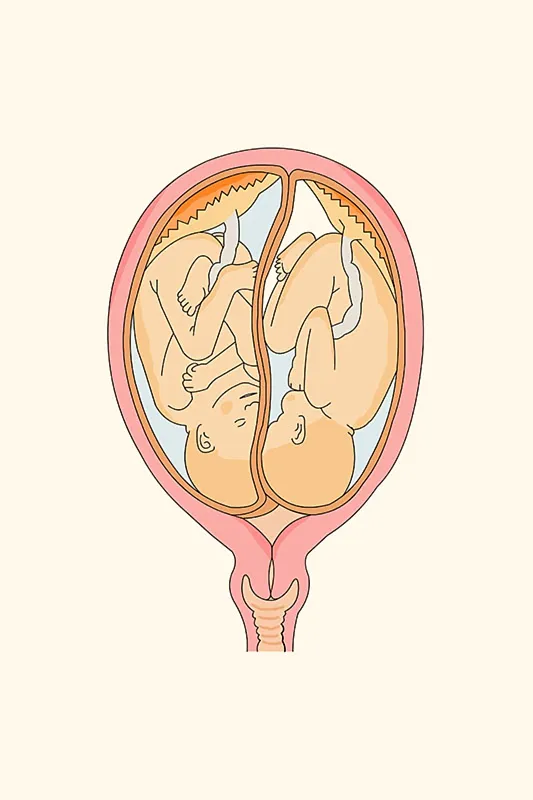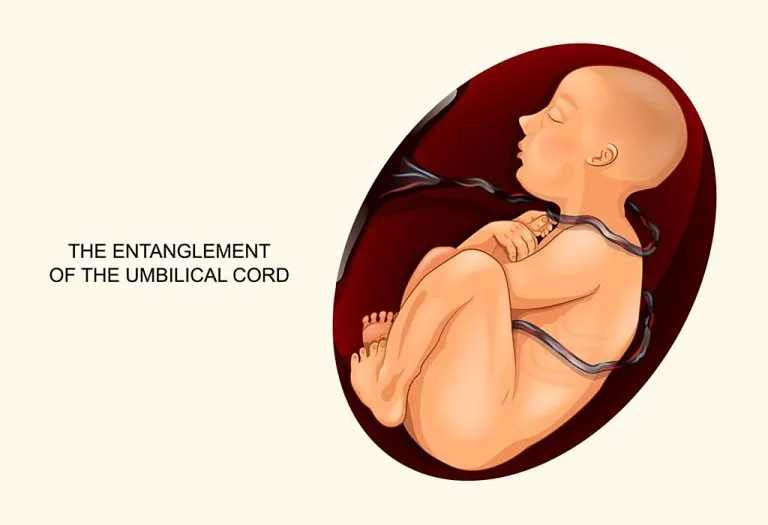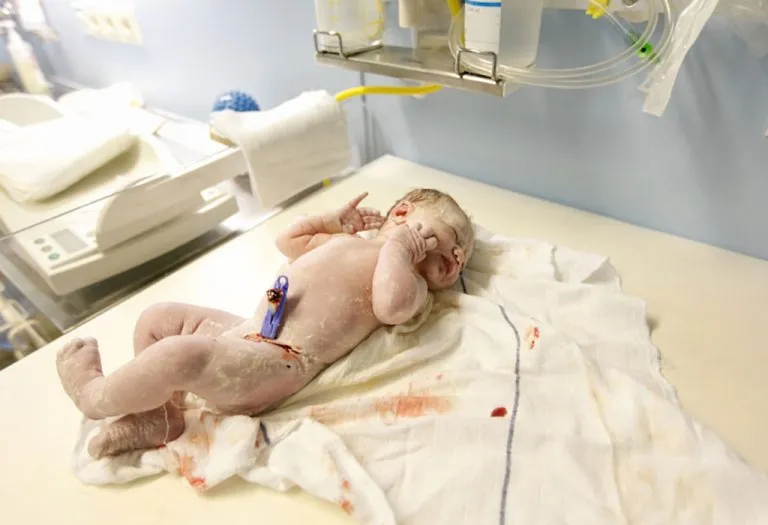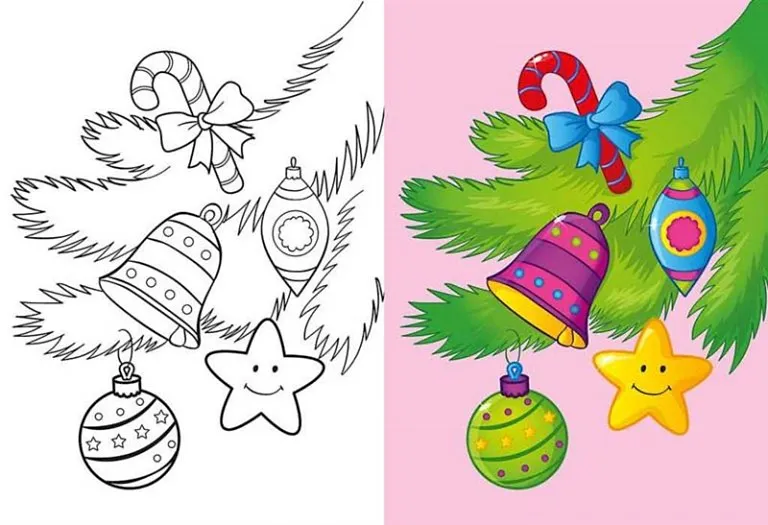Nuchal Cord (Umbilical Cord Around Neck): Causes & Remedies

- What Is a Nuchal Cord?
- What Is a Double Nuchal Cord?
- How Common Are Nuchal Cords?
- Causes of a Nuchal Cord
- Symptoms of Umbilical Cord Around Neck
- Diagnosis of a Nuchal Cord
- Treatment of Nuchal Cord
- Possibility of Strangulation Due to a Nuchal Cord
- Relation Between Nuchal Cord and Birth Asphyxia
- Complications and Birth Injuries Due to a Nuchal Cord
- How to Prevent Umbilical Cord Around Neck?
- Should You Worry If Your Baby Has a Nuchal Cord?
- FAQs
The umbilical cord connecting the mother to the foetus is responsible for the baby’s development inside the womb. It provides the foetus with blood, oxygen, nutrients, vitamins, fats and proteins. The umbilical cord also carries the reverse scenario of carrying waste products and de-oxygenated blood back to the mother’s body. During pregnancy, the baby keeps moving inside the womb, which could result in the umbilical cord wrapped around the neck. The complication is also called nuchal cord, and it is a common occurrence during pregnancy, afflicting almost 20%-30% of expectant mothers.
In this article, we shall discuss all the aspects a would-be-mother should know about the umbilical cord around the baby’s neck to avoid any stress that may be caused by uncertain situations, which are common concerning pregnancy.
What Is a Nuchal Cord?
A normal and healthy umbilical cord is well protected by a soft, gelatinous textured filling called “Wharton’s Jelly”. This substance keeps the cord from tangling regardless of how often the baby turns into the uterus. Umbilical cord entanglement occurs when the cord entwines itself around the entire body of the fetus. However, when the umbilical cord is entangled around the neck during pregnancy, it is known as a nuchal cord.
The baby often has the umbilical cord loosely entwined around the neck, but it doesn’t cause any harm. There are times, however, when the nuchal cord could turn into a complication, especially when it wraps tightly around the foetus’ neck before delivery. It then disrupts the blood flow and the supply of oxygen and nutrients from the mother to the foetus, causing severe injuries or birth complications like asphyxia and cerebral palsy (7).
What Is a Double Nuchal Cord?
A double nuchal cord occurs when the baby’s umbilical cord wraps around his neck twice. This complication is less frequent; however, if it does happen, the outcomes are similar. There are exceptional cases when the double nuchal cord could put a baby at risk of hypoxia, reduced blood flow and other birth complications and injuries.
The umbilical cord is generally long enough to wrap comfortably around the neck of the baby, with enough length left over. Nature has essentially designed the umbilical cord to be wrapped around the neck without causing any problems. Doctors and midwives don’t mention the nuchal cord during delivery and just slip the cord over the baby’s head during childbirth. It is medically proven that unless there is a dire consequence posed, the cord should be left alone during birth to avoid complications.
Given the design of a healthy cord, there have been instances when babies have the cord wrapped around their neck multiple times and are still fine. Only one in 2000 birth cases has a “true knot” in the cord, which poses grave risks. In most cases, the cord is harmless and does not tighten even during childbirth to pose any danger.
How Common Are Nuchal Cords?
Proven medically, nuchal cords are very common, and about one in every three foetuses has this condition. Babies born under these conditions are perfectly healthy unless there is a severe complication with the cord. Most medical practitioners cannot tell if the baby has a nuchal cord even after looking at an ultrasound (2).
Causes of a Nuchal Cord
Unborn babies are little gymnasts in their mother’s womb. Pregnant mothers do enjoy their moves, kicks and butts, but these movements could also lead to a nuchal cord. There are other proven biological and medically ascertained reasons why a cord may end up around the baby’s neck. Let’s take a look at them.
1. Insufficient Wharton’s Jelly
Wharton’s Jelly is a soft, gelatinous substance that protects the blood vessels inside the cord. It prevents compression and excessive knotting due to the baby’s movement. If the jelly is insufficient, it could lead to a nuchal cord.
2. Excess of Amniotic Fluid in the Sac
Since the foetus floats in the amniotic fluid, the knots do not affect the foetus. However, if the amniotic sac is filled with too much fluid, it could pose some risk.
3. Length of Umbilical Cord
A foetus generally has a long umbilical cord, and in the case of a nuchal cord, the umbilical cord is longer than usual. However, medical science has yet to prove whether the length of the umbilical cord causes it to wind around the baby’s neck or if the winding causes the umbilical cord to stretch and lengthen (1).
4. Having More Than One Foetus (Twins or Multiples)
The presence of two or more foetuses means an equal number of umbilical cords. With the movement of two babies in the uterus, the possibility of cords getting entangled is greater. This does not pose a great risk unless the twins share the same amniotic sac, in which case they could have the umbilical cord getting entangled to a certain degree, and the cords could get wrapped around the neck of the other twin or their own (10).

5. Excessive Foetal Movement
If the baby tends to move a lot in the uterus, there are chances that the cord could get entangled around the neck. As the gestation period increases, the probability of a nuchal cord increase.
Now that we know the causes of a nuchal cord, let’s look at the symptoms.
Symptoms of Umbilical Cord Around Neck
Identifying an umbilical cord around a baby’s neck in the womb symptoms early on is crucial for ensuring the health and safety of both the mother and the baby. There are no proven signs that suggest the presence of an umbilical cord around the neck of the baby. However, some potential symptoms that denote the baby could have a nuchal cord are:
1. Reduced Movement of the Baby
If the baby seems to be moving less after 37 weeks of gestation, it could be a warning sign of a nuchal cord.
2. Abnormal Heart Rate
During labour, the foetal monitor detects the presence of a nuchal cord by gauging the abnormal heart rate.
Ultrasound scans could detect if the baby is suffering from hypoxia or respiratory difficulties caused by a nuchal cord. Although a diagnosis is possible, a medical practitioner will not be able to assess the risk associated with it to the baby’s life.
Diagnosis of a Nuchal Cord
Obstetric ultrasound can diagnose the presence of a nuchal cord. An ultrasound scan can also help deduce how often the umbilical cord has been entwined around the neck. However, this is dependent on the quality of the images achieved. Doctors look at multiple views of the fetal neck to identify a nuchal cord.
If the umbilical cord is encircled around three-quarters of the foetus’ neck, it is ascertained as a nuchal cord. If the cord is encircled to only half of the neck, it is classified as a trigger to the presence of a nuchal cord.
With grayscale imaging, the chances of an ultrasound detecting a nuchal cord are 70%. However, with colour Doppler, nuchal cords can be detected with an accuracy of 83% to 97% via an ultrasound. Nuchal cord ultrasound does give you an idea of the presence of an issue, but no intervention is possible.
Treatment of Nuchal Cord
The presence of the nuchal cord ascertained by ultrasound is only a possible indication of any complications that could arise in the future. There is no known treatment to get rid of the problem. Doctors keep a close watch on the compression of the umbilical cord during labour or in the weeks leading to delivery to prevent any complications. Doctors recommended c-section in some cases, as nuchal cords can cause birth complications or hypoxia.
When people think of an umbilical cord around the baby’s neck, the first thing that comes to their mind is whether it would strangle the baby. In the remaining article, we shall address some of these concerns and share information about complications/injuries due to a nuchal cord.
Possibility of Strangulation Due to a Nuchal Cord
The umbilical cord is the passage through which the baby receives oxygen. The presence of the umbilical cord around the baby’s neck also poses a risk of strangulation as it can tighten itself around the baby’s neck during labour, thereby decreasing or stopping the flow of blood to his brain due to strangulation.
Relation Between Nuchal Cord and Birth Asphyxia
The umbilical cord is about 20 inches long and about an inch in diameter, with a loosely coiled appearance. It has two veins supplying oxygenated and nutrient-rich blood to the baby and two arteries carrying de-oxygenated and nutrient-deficient blood back to the placenta. Occasionally, the umbilical cord will have only one vein and artery. If the cord happens to be prolapsed, compressed, or knotted, the supply of oxygen is reduced, causing asphyxiation (3).
The nuchal cord can be broadly classified as:
- Type A Nuchal Cord – The umbilical cord is wrapped 360 degrees around a baby’s neck.
- Type B Nuchal Cord – The cord cannot be undone and ends as a true knot.
A common prevalence is that nuchal cords can entwine and disentangle at any time. Although not known to cause serious harm in most cases, it could lead to the complications below.
Complications and Birth Injuries Due to a Nuchal Cord
Potential complications and effects of the umbilical cord wrapped around the neck include:
1. Hypoxic-Ischemic Encephalopathy/Birth Asphyxia
An umbilical cord wrapped around the neck can cause brain damage. It is caused by the deprivation of oxygen or limited blood flow to the baby’s brain during or near birth. This leads to cell death, subsequently leading to brain damage, causing disabilities like cerebral palsy, seizures, and developmental and learning disabilities (6).
2. Intrauterine Growth Restriction (IUGR)
It is a condition in which abnormal intrauterine growth causes a foetus to be smaller than average. Babies with IUGR are at risk of a nuchal cord or asphyxia and are delivered prematurely (4).

3. Meconium Aspiration Syndrome
It is a medical condition in which the foetus swallows a mixture of meconium (its stool) and amniotic fluid, which could also enter into the baby’s lungs during delivery and cause breathing complications (8).
All the information may seem daunting, and you must consider whether there is a way to prevent a nuchal cord. Read on to know if there are ways to do so.
How to Prevent Umbilical Cord Around Neck?
With the foetus constantly moving inside the uterus, there is no sure way to prevent the umbilical cord from entangling around the neck of the foetus. The cord entwines and detangles several times during pregnancy. Only on rare occasions, when a cord gets twisted many times, does it prove to be a “cord accident”, which is also not preventable while the baby is still in the mother’s womb.
Should You Worry If Your Baby Has a Nuchal Cord?
A nuchal cord is relatively common and usually not a cause for concern. Most babies with a pregnancy cord around the neck are born healthy without complications. Medical professionals are skilled at managing this situation during delivery, and often, the cord can be gently slipped over the baby’s head as they are being born (5). In rare cases, if the nuchal cord is tightly wrapped and causing distress, medical intervention may be necessary. Regular prenatal checkups help monitor the baby’s well-being and ensure any potential issues are addressed promptly.
FAQs
1. What is the function of the baby’s umbilical cord in the womb during pregnancy?
The umbilical cord, connecting the baby to the placenta, plays a crucial role in supporting the baby’s development. It provides essential nutrients and oxygen from the mother and removes waste products from the baby’s bloodstream, ensuring the baby’s growth throughout pregnancy (9).
2. Is a cesarean section necessary if a nuchal cord is present?
A nuchal cord alone is not usually an indication for a cesarean section. Decisions about delivery methods are based on various factors, including the baby’s overall health, position, and any signs of distress during labour.
Since all the factors leading to a nuchal cord are uncontrollable, birth complications due to a nuchal cord cannot be prevented or treated. However, there are ways to deal with the complications, especially during childbirth. So, don’t entangle yourself in fear of the winding characteristic of the umbilical cord. Remain calm and unravel every pregnancy stage joyfully so your baby will feel happy.
References/Resources:
1. Horsager-Boehrer. R; What happens if the umbilical cord is around my baby’s neck?; University of Texas Southwestern Medical Center; https://utswmed.org/medblog/nuchal-cord-during-pregnancy/
2. Montoya. M; Nuchal Cord: Managing Delivery if the Umbilical Cord Wraps Around the Baby’s Neck; The University of New Mexico; https://unmhealth.org/stories/2022/12/nuchal-cord-managing-delivery-umbilical-cord-wraps-around-babys-neck.html
3. Peesay. M; Nuchal cord and its implications; PubMed Central; https://www.ncbi.nlm.nih.gov/pmc/articles/PMC5719938/
4. Intrauterine Growth Restriction (IUGR); Nemours KidsHealth; https://kidshealth.org/en/parents/iugr.html
5. Umbilical cord conditions; March of Dimes; https://www.marchofdimes.org/find-support/topics/birth/umbilical-cord-conditions
6. Neonatal Hypoxic-Ischemic Encephalopathy; Nationwide Children’s Hospital; https://www.nationwidechildrens.org/conditions/health-library/neonatal-hypoxic-ischemic-encephalopathy
7. Cerebral Palsy; National Institutes of Neurological Disorders and Stroke; https://www.ninds.nih.gov/health-information/disorders/cerebral-palsy
8. Meconium Aspiration Syndrome (MAS); Nemours KidsHealth; https://kidshealth.org/en/parents/meconium.html
9. Umbilical cord conditions; March of Dimes; https://www.marchofdimes.org/find-support/topics/birth/umbilical-cord-conditions#
10. Lyndrup. J, Schouenborg. L; Cord entanglement in monoamniotic twin pregnancies; European Journal of Obstetrics and Gynecology; https://www.ejog.org/article/0028-2243(87)90080-3/pdf
Umbilical Cord Prolapse
Delayed Cord Clamping
Two-Vessel Cord (Single Umbilical Artery)
Protruding Navel and Umbilical Hernia in Pregnancy
Was This Article Helpful?
Parenting is a huge responsibility, for you as a caregiver, but also for us as a parenting content platform. We understand that and take our responsibility of creating credible content seriously. FirstCry Parenting articles are written and published only after extensive research using factually sound references to deliver quality content that is accurate, validated by experts, and completely reliable. To understand how we go about creating content that is credible, read our editorial policy here.
























